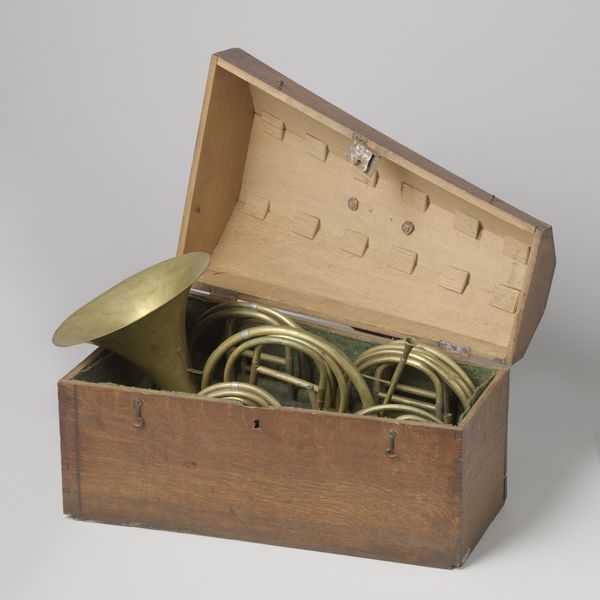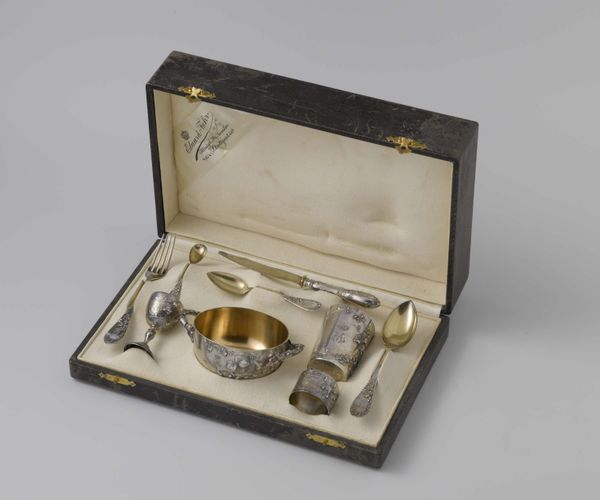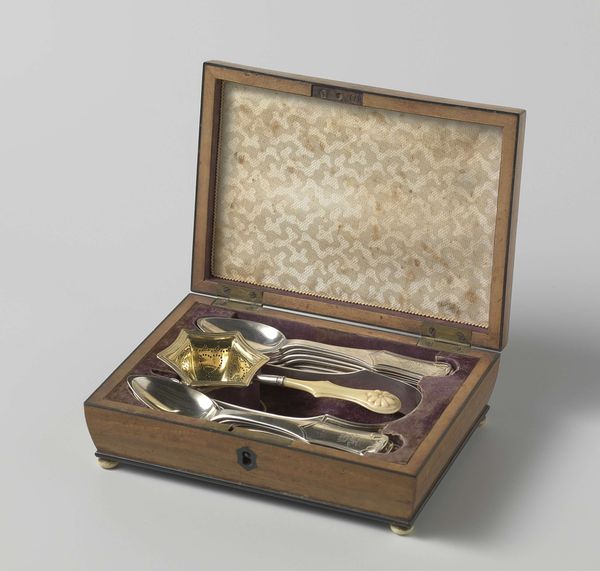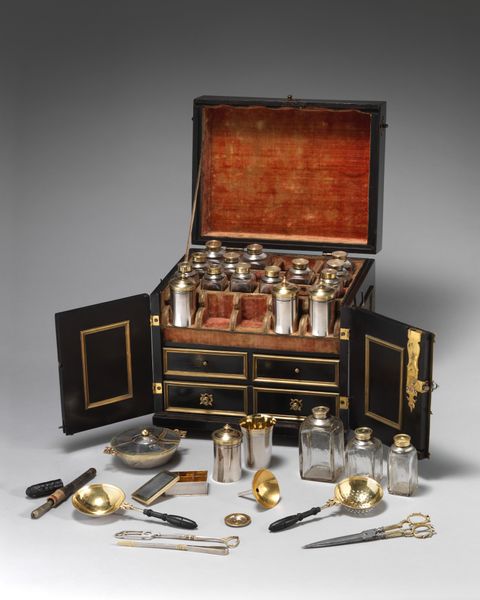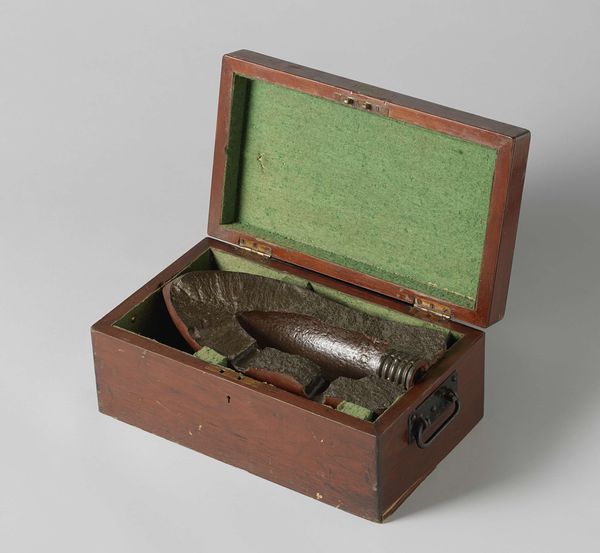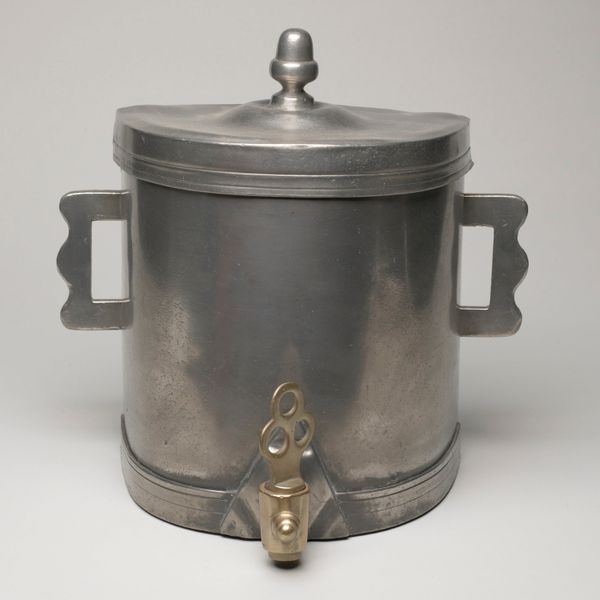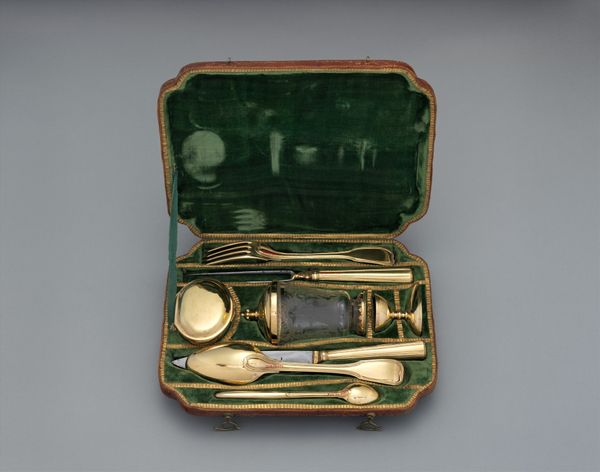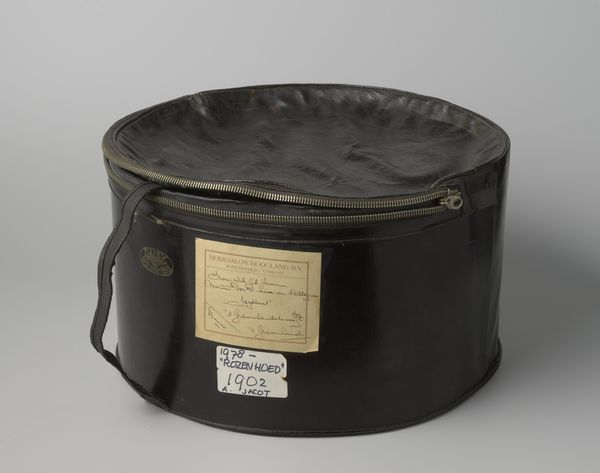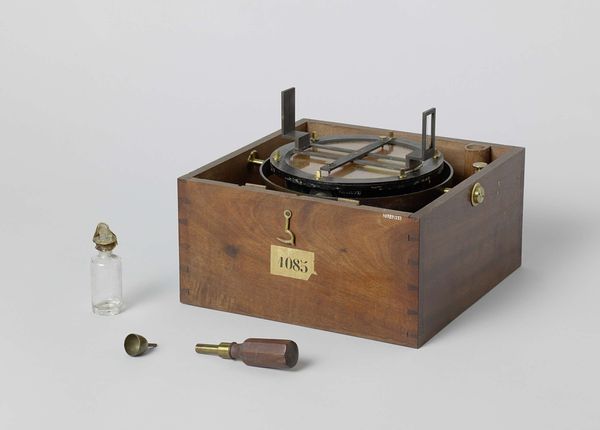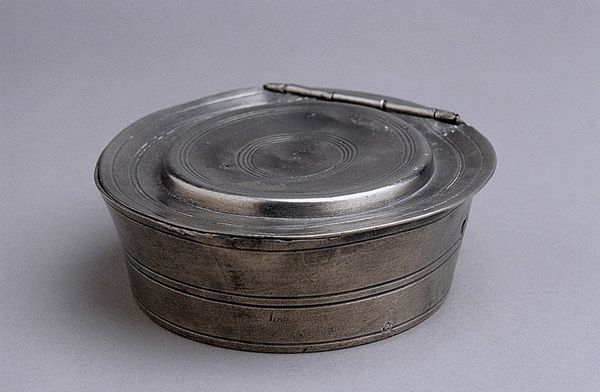
metal, glass
#
neoclacissism
#
metal
#
glass
#
academic-art
#
decorative-art
Dimensions: height 31 cm, width 37 cm, depth 30 cm
Copyright: Rijks Museum: Open Domain
Curator: Here we have "Standard Volume Measures," crafted in 1820 by the Amsterdamse Geschut- en Klokgieterij. The piece comprises metal and glass, reflecting Neoclassical and Academic artistic influences. What catches your eye first? Editor: Well, they strike me as strangely serene, given their utilitarian purpose. The cool gray box juxtaposed with the warm brass vessels, it feels almost like a still life. Curator: It's fascinating how objects intended for objective measurement can evoke such feeling. Notice how each cylinder bears inscriptions, possibly names, volumes, or official stamps. These markings act as emblems of a bygone era, rich in societal importance. Editor: Indeed. These vessels speak volumes about the drive for standardization and control in the 19th century. Think about what 'standard' implies— whose standard was it, and who benefitted from this precision? What power structures are subtly reflected here? Curator: The visual vocabulary certainly reflects a quest for order. The careful gradation in size suggests a hierarchical structure mirrored in broader society. Beyond this, consider glass: it acts as a kind of liminal barrier. We can see through it but not access the space within. Editor: Precisely. The clarity of the glass juxtaposed with the solidity of the brass reminds me that measurement is never a neutral act. Each choice of material or method embodies the social biases and power dynamics of its time. Curator: You see it in a particularly intriguing light. I’m also reminded how these volume measures represent a critical development in trade and governance. It underscores the emergence of rational and calculated approaches toward society, shaping systems that extend into our own lives. Editor: Yes, this artwork opens a window onto how concepts of objectivity and accuracy were constructed and implemented. Thinking about it now, each container could be perceived as embodying a specific social stratum defined and categorized by measurable factors. It certainly prompts deeper reflection. Curator: Reflecting on it now, these mundane yet exquisite measuring tools whisper stories of stability and a rational ordering, a social contract rendered in brass and glass. Editor: Indeed, leaving me to think, how far have we really come since 1820 in questioning our metrics and acknowledging their inherent biases.
Comments
No comments
Be the first to comment and join the conversation on the ultimate creative platform.
